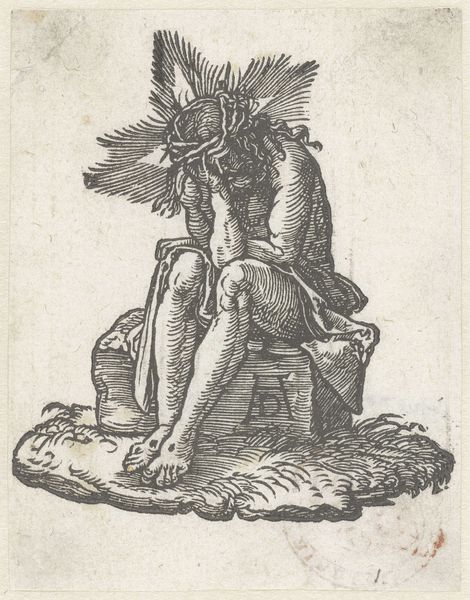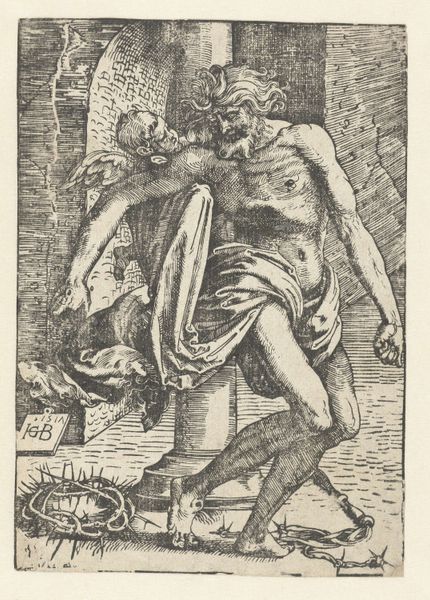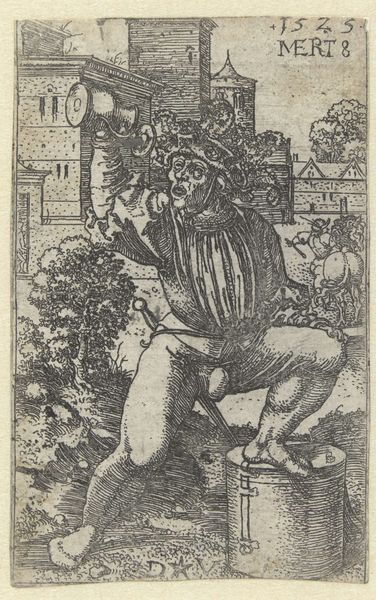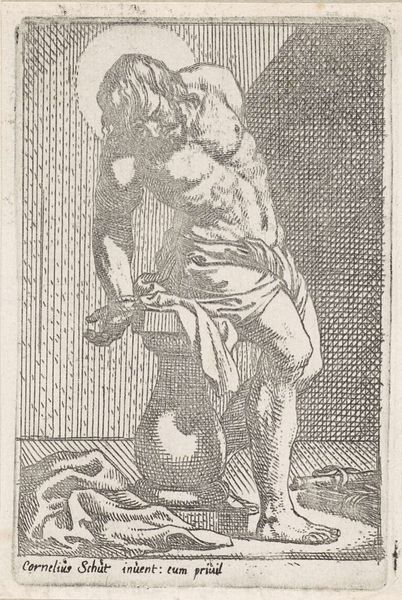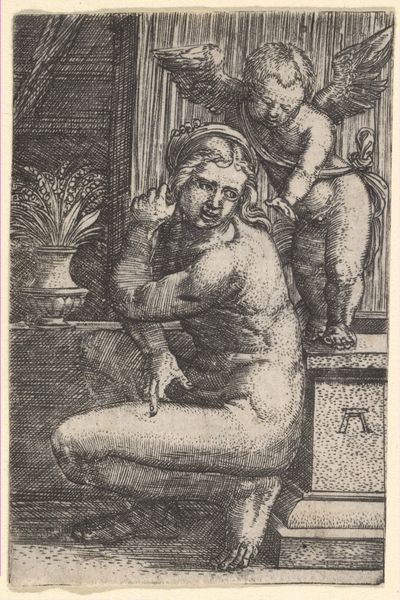
print, engraving
# print
#
figuration
#
history-painting
#
italian-renaissance
#
nude
#
engraving
Dimensions: 1 9/16 × 1 1/4 in. (3.97 × 3.18 cm) (sheet)
Copyright: Public Domain
Editor: We’re looking at Albrecht Altdorfer’s “Bathing Woman,” an engraving from the 1520s or 30s, housed here at the Minneapolis Institute of Art. The figure seems almost contemplative, yet vulnerable in her nudity. What stands out to you in this piece? Curator: What strikes me is the power dynamic at play. We have this classical subject, the nude woman, typically rendered for male consumption, yet here she's turned inward, almost resisting that gaze. Consider how the lines create a texture that almost obscures, refusing easy objectification. Does she appear ashamed, self-absorbed, pensive, or lost within constraints set on her own agency? Editor: I hadn’t thought of it as resistance, more of a… melancholy. Curator: Melancholy is definitely present. But consider the context of the Renaissance. How did ideas of female beauty and virtue intersect with the rise of humanism and renewed interest in classical themes? Altdorfer is playing with these concepts. Who controls the narrative about a bathing woman, in art, and what messages are reinforced and recycled across time and different cultures? Is the "Bathing Woman" a prison of assigned and limiting societal expectation or simply the portrayal of a woman who bathes? Editor: That’s a really powerful point. It completely changes how I view her pose and the composition of the piece. Curator: Precisely. By looking at the historical context, coupled with modern gender and power dynamics, we move beyond simply appreciating its beauty, toward understanding its complexities. Editor: This has given me so much to consider in terms of Altdorfer and beyond. It encourages a way of thinking, in the framework, to interrogate historical artwork on many different planes. Curator: Indeed, and by acknowledging art's historical implications we bring forward the ideas for discussion today.
Comments
minneapolisinstituteofart almost 2 years ago
⋮
Albrecht Altdorfer made some of the smallest Renaissance prints and also contributed to some of the largest, including Maximilian I’s giant Triumphal Arch woodcut (more than 11 feet high). The son of a miniaturist, Altdorfer helped instigate the northern craze for tiny prints. In this example, his perspectival lines (he was also an architect) form a counterpoint to the rounded forms of the bather and her bonnet.
Join the conversation
Join millions of artists and users on Artera today and experience the ultimate creative platform.


